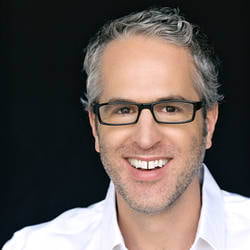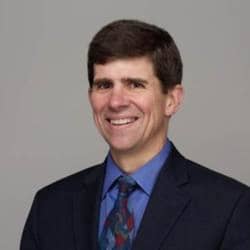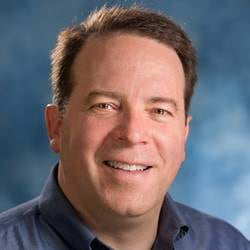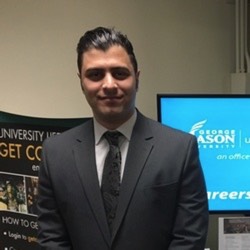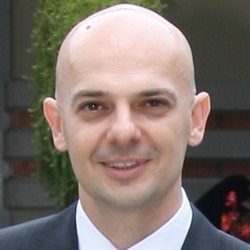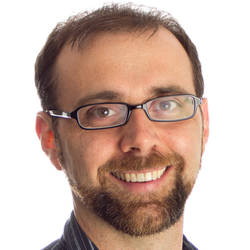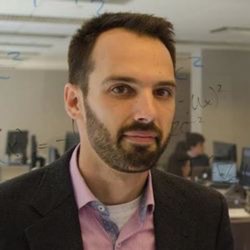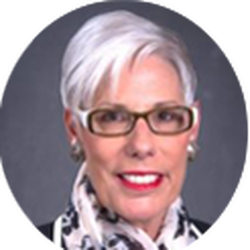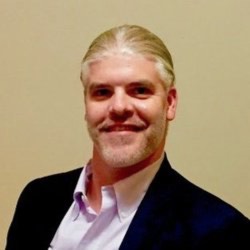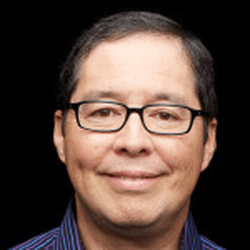DAY 1, Monday, October 30, 2017
All Sessions will Take Place in Room 1E13, Located in Hall 1E
Exhibit Hall Hours:
Monday 8:00am-7:00pm and Tuesday 8:00am- 3:30pm
Registration
8:00-8:30am • Room: Exhibit Hall
Networking over Coffee
Conference Founder Remarks
Conference Chair Welcome
Keynote
Digital Medicine: Returning Patients to the Center of Healthcare
Specialization in medicine has yielded impressive technical results. Consequently, we organize medical research, treatment, regulation, and payment in silos. In part because of this approach, real-world effectiveness has lagged. In approximately 1/2 of cases, patients are unable to benefit from prescribed therapies due to what psychologists categorize as a systematic and predictable cognitive error. Historically, physicians have been unable to diagnose and treat this problem.
19th century physicians had few efficacious treatments to offer their patients, but each was known as an individual and treated holistically. One paradox of the mobile revolution is that by connecting the silos our smartphones are re-personalizing medicine, putting the individual back at the center of medicine, thereby improving clinical outcomes. Recent evidence will be presented demonstrating how Digital Medicines are bringing holistic, effective healthcare to everyone everywhere.
[ Top of this page ] [ Agenda overview ]
9:45-10:30am • Room: Exhibit Hall
Exhibits & Morning Coffee Break
Risk Modeling
Case Study: OSF Healthcare System
The Tale of Two Models: Identifying High Risk Patients in an Ambulatory Setting
To be relevant, models must be useful. To be useful they must provide actionable intelligence to end users. This session will highlight two models answering similar questions differently, given their intended audiences and uses. To provide a single risk stratification for primary care, the Advanced Analytics team at OSF Healthcare developed and deployed our Patient Utilization Model. Simultaneously the Advanced Analytics team built a specialized cost model for our CMS ACO patient population to assist our complex care management organization. This session will highlight the utility of each model and address how each provides value.
[ Top of this page ] [ Agenda overview ]
Oncology Analytics
Case Study: QuintilesIMS
Using Deep Learning to Identify the Key Triggers of Initiating Patient First Line Treatment: An Oncology Case Study
Recent breakthrough in deep learning technology has demonstrated superior model performance and witnessed various applications. In oncology patient predictive studies, the medical data present many challenges such as high dimensionality, sparsity, high variability and look alike patient profiles etc., which cause poor model performance. Traditional models also need extensive clinical knowledge to manually design predictors. We construct a deep and wide neural networks model to carry out end-to-end learning. The novel model automatically identifies the key triggers of initiating first line treatment without the need of hand designing features. It also shows consistent accuracy improvement over benchmark methods.
[ Top of this page ] [ Agenda overview ]
12:05-1:35pm • Room: Exhibit Hall
Lunch
1:35-2:30pm
Special Plenary Session
Thinking Hard and Soft: The Clash of Data Science, AI, and Human Expertise
In the Thinking Wars, "Soft" is still on top. But for how long? Human Expertise — embattled everywhere by the machine rivals it spawned -- is still the only thing that can create something completely new. Yet, human judgment is painfully slow, inconsistent, and sometimes no more accurate than chance. The "hard" discipline of Data Science is fast, consistent, and (often) more accurate. DS takes a story and renders it into a data point; then, from myriad such points, induces valuable general lessons -- without bias, distraction, or preconceived notions. But only if essential details are in the stories. Anything not there is a shock, and inconceivable. A rival "hard" thinker, AI, can use knowledge encoded ahead of time; it doesn't have to learn everything anew via examples. But such expertise is astonishingly mercurial; the act of isolating it to encode it may even harm it! And the base of "common sense" needed to build on is surprisingly vast. Thus, for decades, Artificial Intelligence has fallen laughably short of its hype. Until all of a sudden... it hasn't. Now, some world-class thinkers (of the "soft" kind) are alarmed. Has a tipping point been reached? Dr. Elder will compare the strengths and weaknesses of these 3 tribes of thought, and clarify the state of their clash.
Quality Evaluation
Case Study: Public Health Data
Evaluating the Quality of State's Healthcare Using Big Data Analytics
In this talk, BDA are applied to healthcare data that is collected from multiple state-level sources to gain quality insights and apprehend best practices of the field (using new healthcare-specific data tools). The US states are unceasingly pursuing potential improvements to their healthcare's Quality of Service. Recent changes in data sharing provisions, such as the disposition of the recent Affordable Health Care Act (ACA), changed the rules of the game. This multidisciplinary talk examines historical health data from all over the country, assesses the medical QoS for multiple US states using a new healthcare-specific analytical infrastructure, and provides data-driven results.
Healthcare Resource Planning
Machine Learning for Health Care Fraud Detection
The United States spends more than $3 trillion or 18% of GDP on an annual basis on health care. According to FBI, the amount of this spending lost due to fraud, waste, and abuse (FWA) ranged between $90B and $330B! This talk will offer practical advice on how to effectively organize and join various health care data such as claim and clinical data, how to set-up the problem, and how to design an effective machine learning solution to identify FWA leads and expedite investigator review using intuitive visualization to understand the risk factors contributing to those leads.
[ Top of this page ] [ Agenda overview ]
3:25-3:55pm • Room: Exhibit Hall
Exhibits & Afternoon Coffee Break
Assessing Risk of Antibiotic Resistant Superbugs
Case Study: University of Virginia Medical Center
Predicting Patient Risk of Acquiring Antibiotic Resistant Superbugs from the Environment
The University of Virginia Health System has sustained a multi-year low frequency transmission of antibiotic resistant environmental organisms with a unique, common genetic signature. In order to identify patients at greater risk of infection and describe the clinical risk factors for acquisition we developed and deployed a patient risk model with an AUC 0.73. Additionally, we used this risk model to examine the risk of patient acquisition of antibiotic resistant organisms from the environment using a treatment effects model.
[ Top of this page ] [ Agenda overview ]
4:45-5:30pm
Influencing Behavior
Creating Engaging Patient Journeys with Persuasion Modeling
Many applications of predictive analytics in healthcare identify a pool of patients at high risk of a preventable poor health outcome, and take steps to engage those individuals to lower their risk. However, less work has been done to identify the messages, frequency, and channels that are most effective at influencing those individuals' behavior. These factors can strongly shape the efficacy of health-related outreach and the costs associated with these programs.
We will present a framework, originally developed by political campaigns to engage voters, to test several messaging strategies, identify which individuals are moved by each health-related message and mode of outreach, and ultimately construct predictive models that enable providers, payers, and community groups effectively engage with each patient. Through this individual-centered persuasion approach, healthcare organizations can focus high touch messaging, such as in-person visits or multiple live phone calls, on those who require it to change their behavior, while reaching a broader, more easily "nudged" population with lower-touch, lower-cost tools such as push notifications and e-mail.
5:30-7:00pm • Room: Exhibit Hall
Networking Reception
[ Top of this page ] [ Agenda overview ]
Dinner with Strangers
[ Top of this page ] [ Agenda overview ]
DAY 2, Tuesday, October 31, 2017
Registration
8:00-9:00am • Room: Exhibit Hall
Networking over Coffee
Conference Chair Welcome
Keynote
Healthcare Analytics: Why is this so expensive and hard? And what are we getting for our money?
Health care continues to lag other industries in the use of data and analytics. Banking and retail have made serious inroads into customer service and knowledge discovery. Why is healthcare lagging? Even looking at the transactional space of health care encounters, we lag other industries that use transactional data such as banking and retail. We'll examine this along with how health care is different and how that affects the interpretation and business application of health care analytics. We'll look at some real-world examples including one of the hardest problems in this space---clinically meaningful patient risk adjustment.
[ Top of this page ] [ Agenda overview ]
Drug Development Analytics
Case Study: Merck
Predicting Survival in Lung Cancer Based on Early Clinical Readouts using Modeling of Literature Data
Cancer care has been brimming with the promise of new therapies, especially those in immuno oncology. This is really exciting and hopeful time for patients but, at the same time, it is particularly important to understand who can benefit from these treatments. In this talk, we present the case study of Keytruda (pembrolizumab) for how one can leverage early readouts in a clinical trial to understand if a treatment is having a potential survival benefit as compared to standard of care. We believe that approaches like that can strengthen the decision making in a rapidly evolving field and ultimately benefit patients by giving them early access to best possibe cancer care.
Having accurate, unbiased prognosis information can help patients and providers make better decisions about what course of treatment to take. Using a comprehensive dataset of all colorectal cancer patients in California, we generate predictive models that estimate short-term and medium-term survival probabilities for patients based on their clinical and demographic information. This talk will discuss how the model was developed, how it improves on previous models, how it should be used, and the impact on the approach to treatment of colorectal cancer patients.
10:45-11:15am • Room: Exhibit Hall
Exhibits & Morning Coffee Break
Industry Update
State of Precision Medicine: Where it is Headed and How to Discern the Signal from the Noise
Precision medicine is gaining momentum throughout the healthcare industry. This presentation will examine current adoption rates of precision medicine solutions across the United States, based on HIMSS Analytics research from the past two years. Additionally, we will look at key trends in this burgeoning field, current technology usage and predictions on the future of precision medicine.
Despite the potential it offers, precision medicine has not been widely adopted across the U.S. healthcare market. This research highlights barriers to entry (limited funds, technology, and expertise); high levels of reliance upon outside entities; and ways to stay ahead of the curve.
12:00-1:25pm • Room: Exhibit Hall
Lunch
Keynote
State of the Data Science in Healthcare
Predictive analytics has only recently seen interest or adoption in health care. This is due not only to a lack of demand pull but also the lack of data and tools needed to use predictive analytic techniques in the healthcare setting. New technologies and the consumer retail revolution change the equation, with more and different kinds of data and the ability to consume and analyze. As a result, we are beginning to see predictive analytics applied to health care on a large scale. This presentation shall look back at use of data analytics in health and care, understand some of the advanced uses available today, and look forward to where we are going.
[ Top of this page ] [ Agenda overview ]
Expert Panel
Is there an "Easy Button" for Healthcare Analytics?
Applying analytics in the business environment has moved beyond adolescence to the early adult stage. Most business executives view predictive analytics as something they have to have to stay competitive, rather than something they'd like to have -- the predominant attitude of just a few years ago. However, sustained ROI from analytics remains elusive for many healthcare organizations, especially as they struggle with the high cost of finding and keeping analytic talent. Proliferating healthcare analytics software companies promise easy and affordable results, but is the easy solution really available now or within our reach? Join our expert panel as we consider the state of healthcare analytics and how organizations are maximizing "bang for their buck", whether from buying services, buying software, building an in-house service, or something in between.
Moderator:Panelists:
[ Top of this page ] [ Agenda overview ]
3:00-3:30pm • Room: Exhibit Hall
Exhibits & Afternoon Coffee Break
Analytics for Emergency Response
Case Study: Disease Outbreak in New York City
Legionnaires' Disease in New York City: Analytics of the Built Environment for Emergency Services
Predictive analytics has proven to be a highly useful tool in the public sector, but what happens when an emergency strikes and we have to build an entire analytics infrastructure from scratch? In this case study the NYC Mayor's Office of Data Analytics (MODA) will walk you through how the City of New York built a system to collect, monitor, and predict the presence of potentially disease-carrying cooling towers among New York\'s one-million plus buildings in less than a week.
Building an Analytics Team
Case Study: OSF Healthcare System
The Benefits and Challenges of Building an In-House Data Science Team
Defining a healthcare data science strategy can be daunting. Do you build a team or buy services as needed? Where do you find and validate talent? Can an internal team really produce enough value to make it worth the effort and cost? What do you need in place to get started? At OSF Healthcare, we built our Advanced Analytics team, comprised of data scientists and statisticians, more than three years ago and have learned a lot along the way. In this candid session, we'll share what we've learned by highlighting some of our key projects' wins and lessons.













